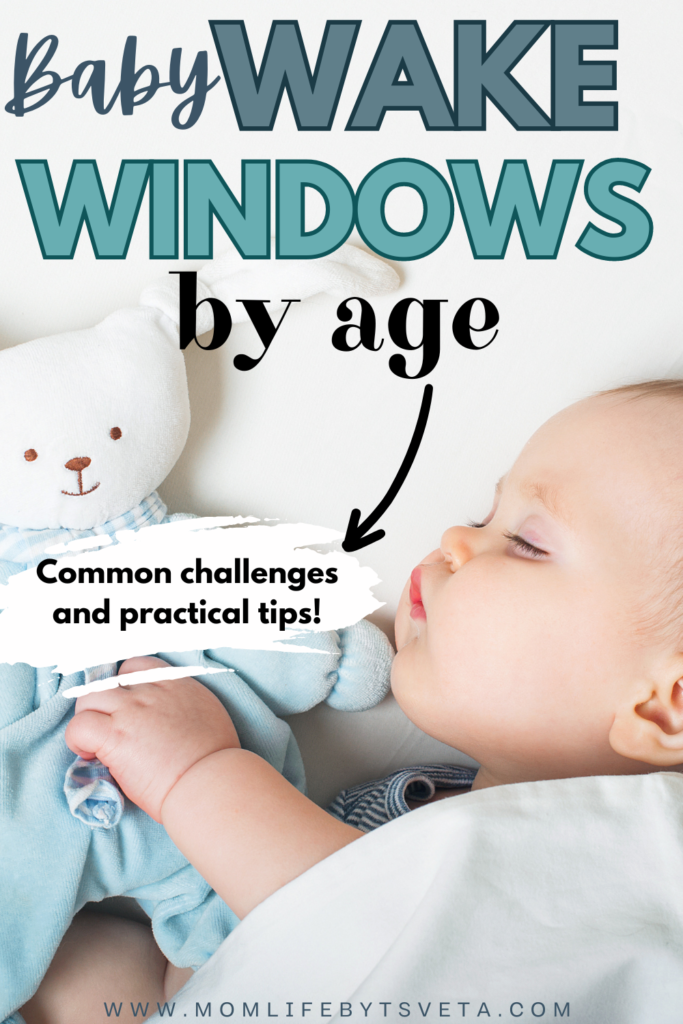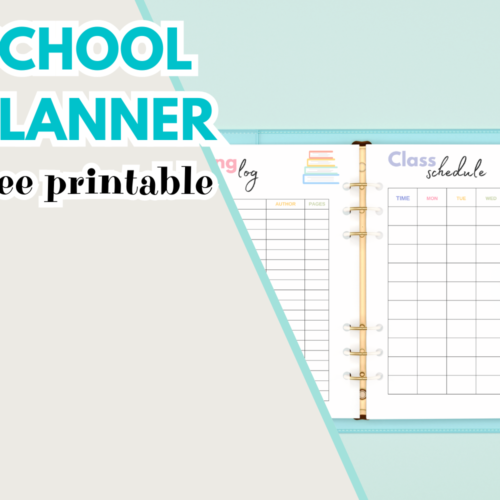What is a Wake Window?
A wake window is the time your baby is awake between naps. It’s key for figuring out when to help them sleep before they get too tired, which is crucial for establishing a solid sleep routine.
Why Wake Windows Matter?
Keeping an eye on your baby’s wake windows ensures they get enough rest for healthy growth and development. Plus, getting the timing right can smooth out their nap schedule, making life easier for everyone. Understanding how these wake windows shift as your baby grows helps you adapt to their changing sleep needs.
Some of the links in this post are affiliate links. This means if you click on the link and purchase an item, I may receive an affiliate commission at no extra cost to you. All opinions remain my own.
Table of Contents

Understanding Wake Windows
What Are Wake Windows?
Wake windows are the times your baby stays awake between naps. Managing these properly helps set their daily sleep rhythm, preventing overstimulation and fussiness, and easing them into sleep more smoothly.
The Science Behind Infant Sleep Cycles
As infants grow, their sleep patterns change due to brain development and the need for more frequent feeding. Initially, their wake windows are short, but as they age, these windows lengthen. This happens as their internal clocks and sleep-wake balance mature, helping you establish a reliable sleep schedule that supports healthy growth.
Wake Windows by Age
Newborn Wake Windows (0-2 Months)
- Duration: Newborns typically have wake windows lasting about 45 to 60 minutes, which include feeding, diaper changes, and some gentle interaction.
- Sleep Readiness Signs: Keep an eye out for yawning, eye rubbing, or fussiness, as these indicate it’s time for sleep.
- Soothing Tips: Gentle rocking, soft singing, or swaddling are effective. A calm environment helps ease them into sleep. For those challenging moments, consider using a soft, comfortable swaddle blanket or a baby rocker, which are available on Amazon. These products can help soothe your baby and encourage sleep.
2 Months Old Wake Windows
- Wake Windows: Still about 45-60 minutes. Babies start to stay alert a bit longer.
- Sleep Cues: Look for signs like yawning, eye rubbing, or decreased activity.
- Soothing Techniques: Swaddling, soft music, and gentle rocking are good methods.
3 Months Old Wake Windows
- Wake Windows: Increases to 1-1.5 hours. Babies become more alert and interactive with their environment.
- Activities: This is a great time to introduce more tummy time and interactive toys to develop sensory and motor skills. You can find highly rated tummy time mats and interactive toys on Amazon that are perfect for this developmental stage.
4 Months Old Wake Windows
- Wake Windows: Now about 1.5-2 hours. Babies are more interactive and curious.
- Routine Adjustments: Engage them with activities like babbling, smiling, and other responsive play to foster their development.
5 Months Old Wake Windows
- Wake Windows: Reaches around 2 hours. Longer play times become more feasible.
- Activities: Introduce a variety of toys and more structured playtime to support cognitive and physical development.
6 Months to 1 Year Old
- Wake Windows: Extend from 2 hours at 6 months up to 3-4 hours by year’s end.
- Developmental Activities: As babies grow, include activities like interactive reading, problem-solving toys, and mobility exercises that encourage crawling and standing.
Integrating your baby’s bedtime routine into the management of wake windows can significantly improve how effectively these windows serve your baby, ensuring not just productive play and interaction but also a smooth transition to bedtime. Adjusting these windows as your baby grows helps maintain a healthy balance between sleep and activity, which is essential for their development.
Sleep Schedule Table: First Year
| Age (Months) | Wake Window | Number of Naps | Total Sleep Hours (24h) |
| 1 | 45-60 mins | 4-5 | 14-17 hours |
| 2 | 1-1.5 hours | 4 | 14-16 hours |
| 3 | 1-1.5 hours | 3-4 | 14-16 hours |
| 4 | 1.5-2 hours | 3 | 14-15 hours |
| 5 | 2 hours | 3 | 14-15 hours |
| 6 | 2-2.5 hours | 2-3 | 14 hours |
| 7 | 2.5-3 hours | 2 | 14 hours |
| 8 | 2.5-3 hours | 2 | 12-14 hours |
| 9 | 2.5-3 hours | 2 | 12-14 hours |
| 10 | 3-3.5 hours | 2 | 12-14 hours |
| 11 | 3-3.5 hours | 2 | 12-14 hours |
| 12 | 3-4 hours | 1-2 | 12-14 hours |
This structure and table provide clear, month-by-month guidance for parents tracking the progression of their baby’s wake windows, nap schedules, and total sleep needs throughout the first year, helping them adapt to changing sleep patterns as their baby grows.

Why Wake Windows Are Important
Understanding and managing wake windows is crucial for your baby’s development and daily well-being. Here’s why:
Impact on Baby’s Sleep Health and Development
Wake windows directly affect your baby’s sleep quality and brain growth. Proper sleep, vital for neural development and emotional regulation, is ensured by adhering to appropriate wake windows. This prevents overtiredness, which can disrupt sleep patterns and overall health.
How Correct Wake Windows Can Lead to Better Night Sleep
Aligning wake windows with your baby’s natural rhythms helps them settle down easier at night and sleep more soundly. A balanced day of activity and rest makes bedtime smoother.
The Relationship Between Wake Windows, Feeding, and Developmental Milestones
Wake windows also influence feeding times and developmental milestones like rolling over and sitting up. These windows provide crucial interaction and energy for learning and growing. Tailoring activities during wake windows supports specific developmental goals, integral to holistic growth.
By keeping a balanced routine of sleep, wakefulness, and feeding, you significantly support your baby’s health and development trajectory.
Practical Tips for Managing Wake Windows
Managing your baby’s wake windows effectively can streamline their routine and support their growth. Here’s how to monitor and adjust these windows, along with solutions to common issues.
Observing and Tracking Sleep Cues
- Observe: Watch for signs your baby is getting sleepy or overstimulated, like yawning, eye rubbing, or fussiness.
- Track: Record sleep times and wake window lengths using a notebook or app to spot patterns and make adjustments.
Adjusting Wake Windows
- Respond: If your baby struggles with sleep, consider shortening overly long wake windows or extending too short ones.
- Adapt: As your baby grows, their sleep needs change. Continually adapt wake windows to fit their evolving needs.
Tackling Common Challenges
- Overstimulation: Reduce noise and dim lights to help your baby wind down.
- Inconsistency: Aim for consistent wake windows daily, even during outings or weekends.
- Nap Resistance: Establish a calming pre-nap routine to encourage sleep, like cuddling in a quiet, dim room.
These tips help keep your baby’s schedule in sync with their natural sleep-wake cycle and facilitate smooth transitions into naps and nighttime sleep. If you’re exploring sleep training your baby, mastering wake windows is a crucial step. This way, your baby not only grows well but also gets the rest they need to thrive.

Solving Common Wake Window Challenges
Handling wake windows effectively can sometimes be challenging. Here are quick tips for managing overstimulation, adapting to unique situations, and knowing when to seek help.
Balancing Overstimulation and Understimulation
- Overstimulation: Look for signs like fussiness or trouble settling down. This could mean too much activity.
- Understimulation: If your baby seems disinterested or overly sleepy, they might need more engaging activities.
- Finding the Balance: Adjust activities within each wake window, mixing playtime with quieter moments.
Adjusting for Situations like Illness or Travel
- Illness: Sick babies might need shorter wake windows and more rest.
- Travel: Keep to the usual sleep schedule as much as possible, using familiar items to comfort your baby and maintain their bedtime routine.
When to Seek Help
- Persistent Sleep Issues: If sleep doesn’t improve despite adjusting wake windows, consider consulting a pediatrician or a sleep consultant.
- Parental Support: If you’re feeling overwhelmed, reach out for support from community groups or seek counseling.
By addressing these issues, you can better manage wake windows to ensure your baby gets the rest they need to thrive.
Conclusion
So, getting the hang of your baby’s wake windows is key to their growth and making sure they get the sleep they need. By paying close attention to when your little one seems ready for sleep, you can create a daily rhythm that fosters healthy sleep habits and supports their overall well-being.
Parenting, especially in the beginning, is all about being patient and staying flexible. Remember, every baby is different and their needs can shift quickly. Keep a cool head, stay adaptive, and don’t worry if you run into challenges along the way. It’s all part of the learning process as you and your baby grow together.
Hopefully, this guide gives you the confidence to manage those wake windows well, leading to better sleep for your baby and more relaxing days and nights for you both.




[…] played a big role, soothing her when she woke, helping break her sleep-feed association. Following wake windows during the day also helped, ensuring she wasn’t too tired at […]